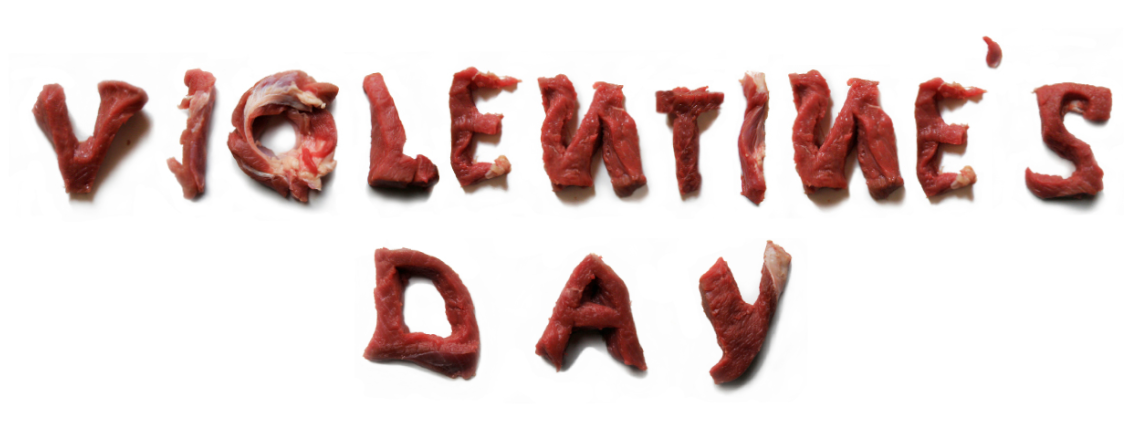
The Violentine’s Day project will take place from February 14th to February 15th 2011 at the Chemineé Nord, Association d’artistes / ex-usine kugler, Geneva, Switzerland.
Violentine’s Day project is a multidisciplinary artistic research project that will result in the creation of an exhibition. It will debate important issues of our daily life activities. The goal is to raise awareness about how our everyday lifestyles are tied into the global economy. Using the means of art to investigate the reality behind Valentine’s Day, this project will make clear how consumption habits in the Global North can have destructive impacts on people and ecologies in other parts of the world. Following the roses sold in Europe back to Kenya, where they are grown, helps us to see how even small consumer decisions can strongly impact the lives of others.
The exhibition is organized by Melano Sokhadze, an artist from Georgia, with the help of other participants, including: Vana kostayola (Greece), Valério Belloni (Italy), Agata Nowak (Poland), Maciej Koper a.k.a. Doctor Koper (Poland), Tomasz Hanke a.k.a. DJ Tom Hanks (Poland), Anna “diabolic laughter” Karowska (Poland), Elene G. Naveriani (Georgia), Giorgi Gago Gagoshidze (Georgia), Dadu Magradze (Georgia), Orféo (Italy, Japan), Yael Maim (Switzerland), Maëlle Cornut (Switzerland), Laurence Wagner (Switzerland), Gene Ray (USA), Daniel Stain (USA), Melano Sokhadze (Georgia), Giorgi Kevlishvili (Georgia) and Joanna Osbert (France).
What is the price of Love?
Traditionally, lovers express their affection for each other by offering gifts and tokens. Valentine’s Day is the recognized calendar day for the romantic celebration of Love. On that day, giving is made especially convenient. Cards and flowers are on ready display, and only neglectful lovers fail to purchase some for their beloveds. The red rose, with its long cultural and literary heritage, is the unmistakable symbol of Love.
But where do the roses come from? Who grows them and where? How do they get to the flower stand at the corner of the street?
The Violentine’s Day art project investigates these questions. Valentine’s Day is big business, and hidden within corporate boardrooms and behind free trade rules are destructive social and ecological costs that the lovers of Europe are seldom asked to think about.
Most of the roses consumed in Europe come from Africa (primarily Kenya), and are produced in factory farms located next to large freshwater lakes. And yet how can a country like Kenya, one of the largest producers of flowers for export, also suffer from severe food shortages?
The Violentine’s Day project aims to generate awareness and discussion about the problematic aspects of this trade.
Locally, rose production creates many problems for Kenyans. Wages in flower factories are higher than the government mandated minimum wage. However, many health and ecological costs are not reflected in the wage relation. To uncover the real social price of the roses of Valentine’s Day, it is necessary to dig deeper. First, roses need large quantities of water (like humans, roses are 70 percent water). Pumping water from lakes diverts available supplies from local small-scale farmers, and desiccates the local environment. Secondly, factory farming requires large quantities of pesticides that contaminate the aquifer and pollute neighboring environments. Finally, rose production is problematic for the workers themselves because of the high concentration of dangerous chemicals in pesticides. Often, workers handling chemicals are not provided with protective clothing, re-entry periods are not consistently respected. ‚Re-entry period‘ is the minimum amount of time that must pass between the time a pesticide was applied to an area or crop, and the moment that people can go into that area without protective clothing and equipment. Pregnant women have been exposed to dangerous levels of chemicals. In addition, the lack of overtime payments and many other labor problems also result from our desire to say, “I love you”. So, one can easily say that the more Western people express their love by buying roses, the more those in exporting countries like Kenya suffer.
“The ecology of terror shows us the path to peace. Peace lies in nourishing ecological and economic democracy and nurturing diversity. Democracy is not merely an electoral ritual but the power of people to shape their destiny, determine how their natural resources are owned and utilized, how their thirst is quenched, how their food is produced and distributed, and what health and education systems they have.”
Vandana Shiva, “Water Wars”
The exhibition will be constructed as a home and such form will create one body of work with different works inside. The participants will create the rooms where they will show their works. The second day, we will showthe documentary film “a BLOOMING BUSINESS” about people leaving in Kenya who are imprisoned by the power of the global flower industry.

Concept: “Fresh Cut”: This label is common use in the flower business to advertise the fresh flower quality. That is, to emphasize the efficiency of the company that cuts flowers in the early morning outside of the country (most factories are based in third countries) and late in the evening you have them in the flower shops.
Flowers are beautiful and having special quality. People like it. They use them to decorate their houses to make a nice ambiance, or give them to beloved ones to express their positive feelings to them. It’s kind of an emotional object of desire. When we give them to the one we want for “Valentine’s Day” we are saying that we have love deep in our heart. Here comes the question: Will roses have the same pure quality after knowing from where and how there are in our hands in order to say I Love you?
Medium: The work will be done on the wall with the roses from Africa.
Author
Melano Sokhadze. Independent artist. Born in Georgia 1981, 1 May.
Leaving and working in Geneva, Switzerland. She is working on issues of how every day life is interconnected with the global economy and politics.